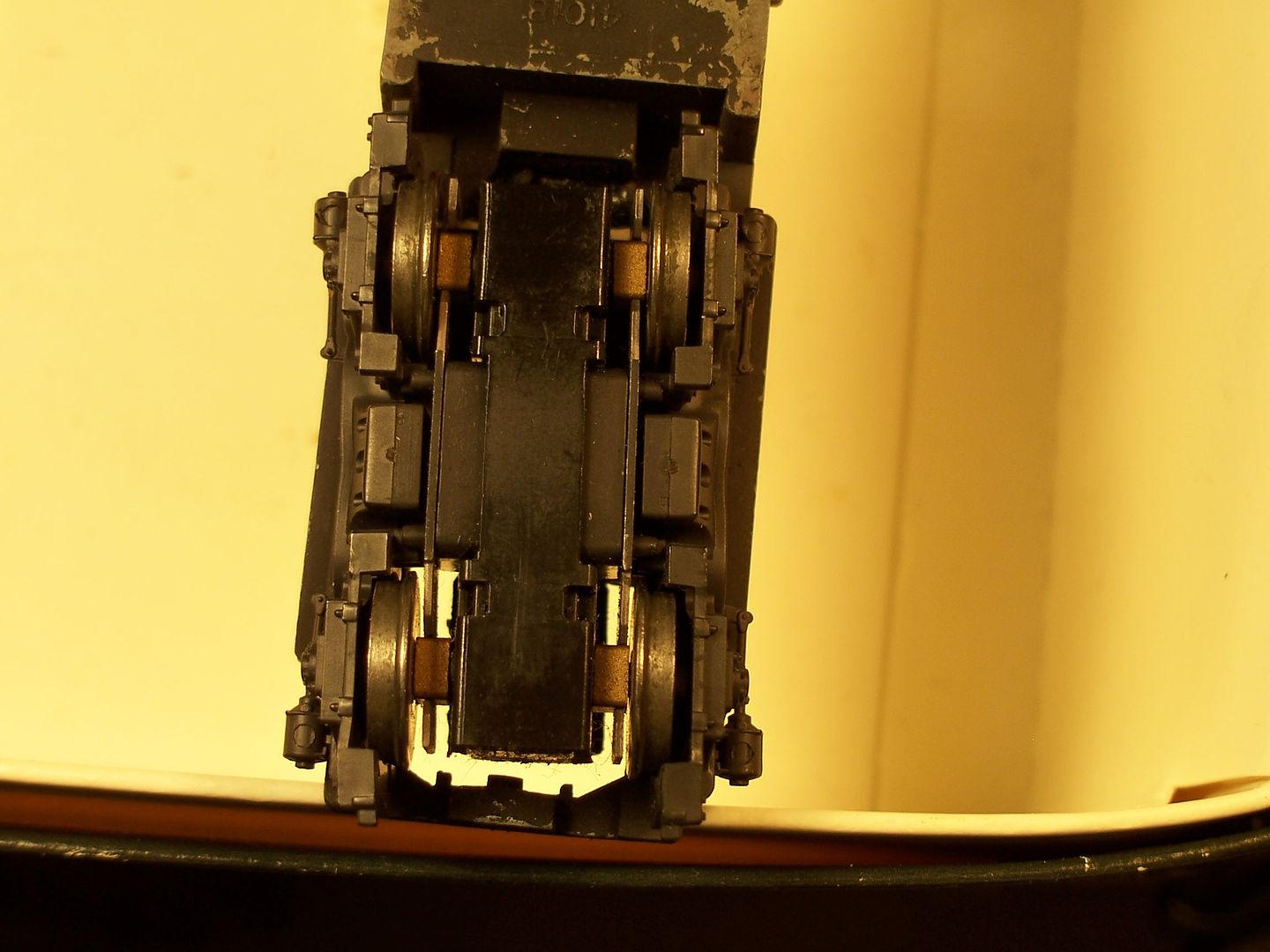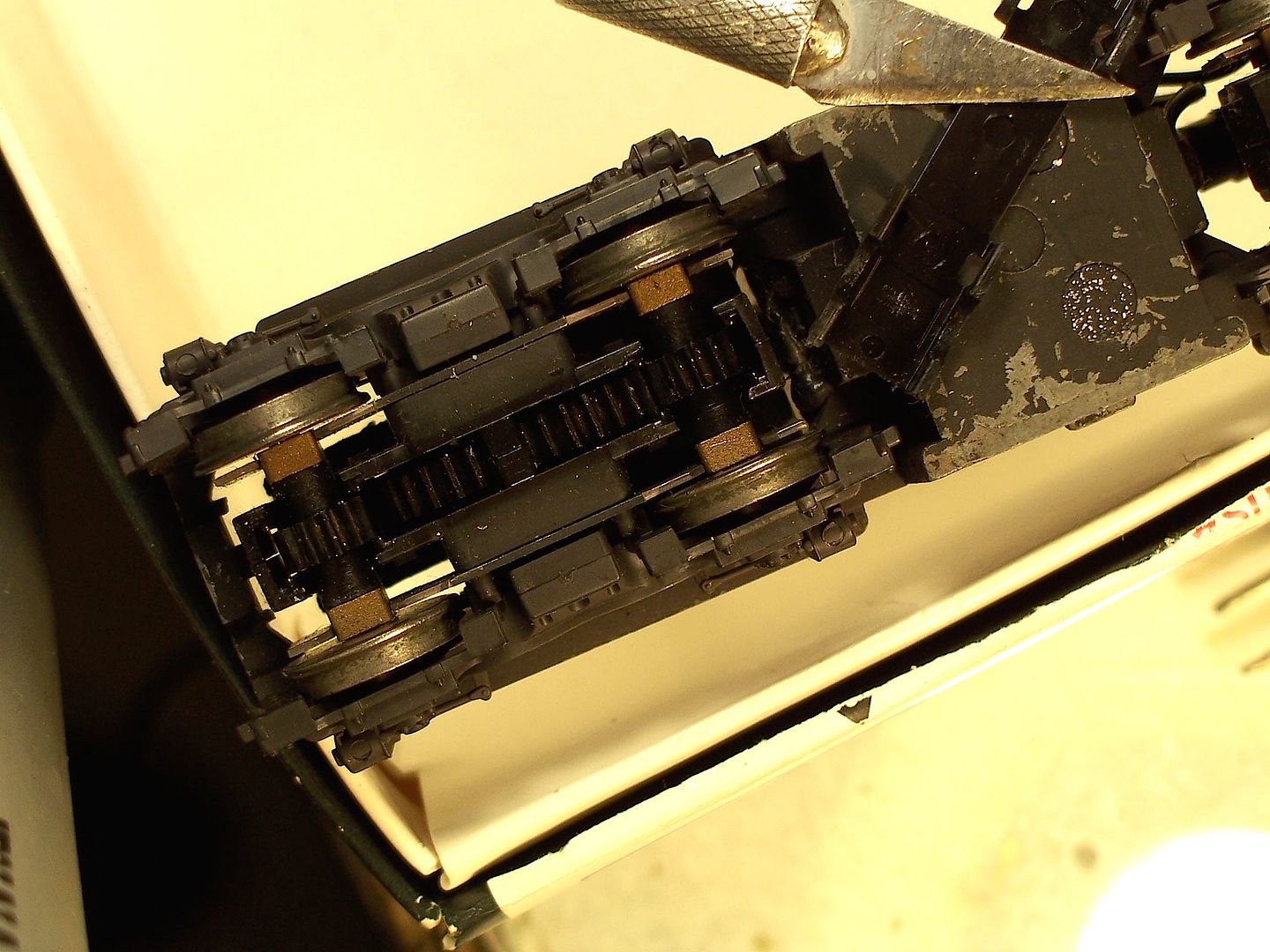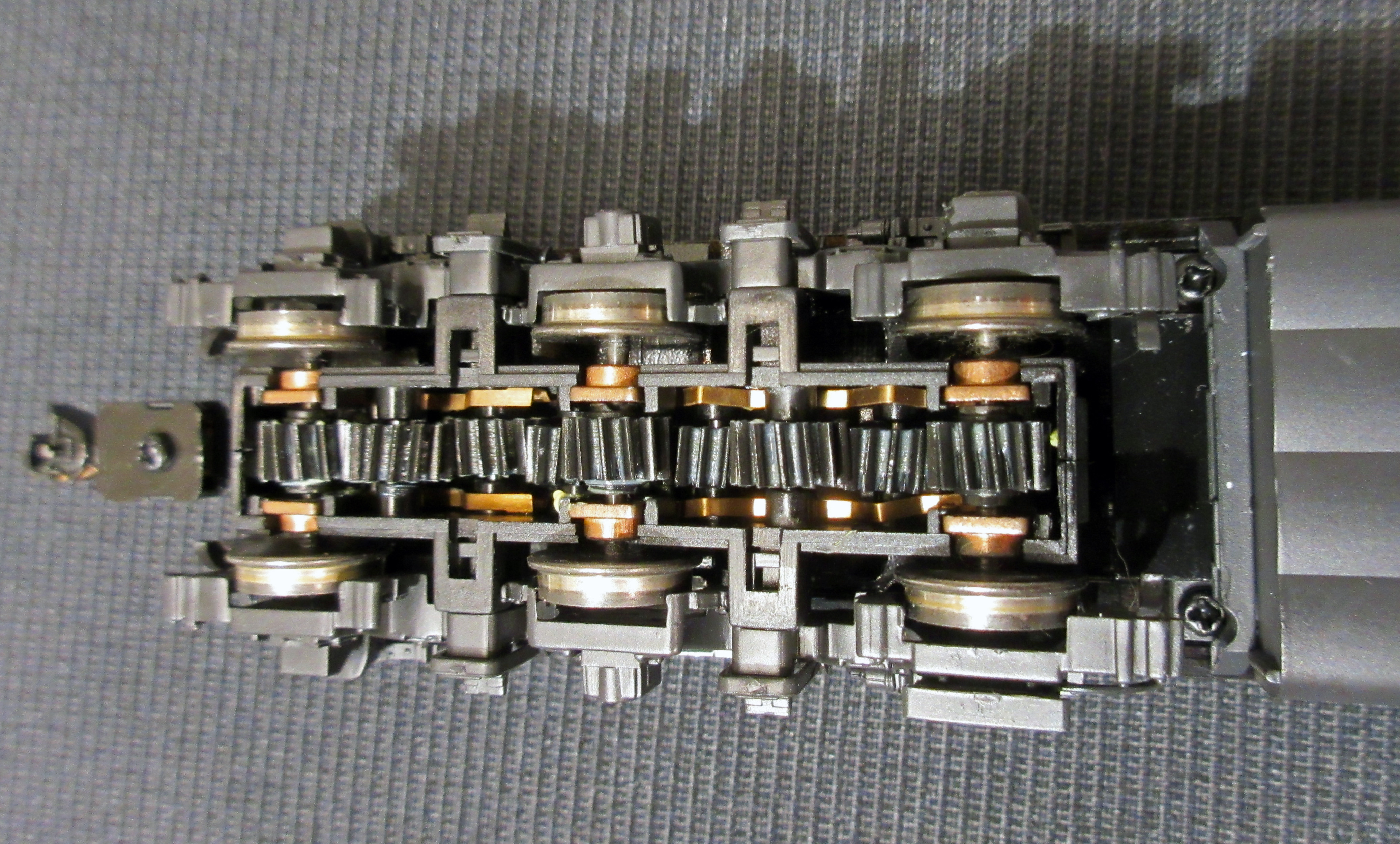Hi everyone, and thankyou for your replies.
After my earlier disapointment today with my B/B GP38-2, I turned my attention to another outstanding job, the Gear-Lub of my 2 No. P2K GP38-2’s. I stated that I would return to this at a later date - and I have.
The Good news is that after re-visiting all of your replies, I succeeded in prising-off the offending Gear-casing, bottom Covers.
This still took some doing IMO and I still cannot help but be slightly dubious of the design. However, I checked then greased the Gears (which they did need) and oiled the Axle Bushes. Both Locos now run far smoother and quieter, than before. [yeah]
The Bad news is that the very last Cover proved to be really difficult. I had done one end, with two scalpel blades keeping it ‘open’, the far side of the final end - ok, but the very last of all, the Clip snapped clean-off, without even trying. [oops]
So I am going to have to obtain a spare assembly from Walthers (I only hope my email isn’t rejected as spam)
The Loco is re-assembled and running for the moment, but I like to have things as they should be, if at all possible.
Also, the Gear-train was to me - a very strange design. With all the Gears in-line like that. IMO, it is no wonder they suffer from cracking. Not withstanding the type of Plastic used, the Gears should be at least twice as thick as they are. Even though only for a Model, they are still subject to forces and loads acting upon them, lateral and radial.
When I removed the Covers, the whole Gearbox immediately tries to dismantle itself! Everything has to be held and pressed together to ‘Snap-back’ into the right place (I hope) This cannot help towards correct alignment of the Gears. Likewise the layout of the Screws securing the Body, Chassis and Casting. I get the impression of last-minute design-work.
Once again, thanks for all of your help, mission accomplished, regards Paul









